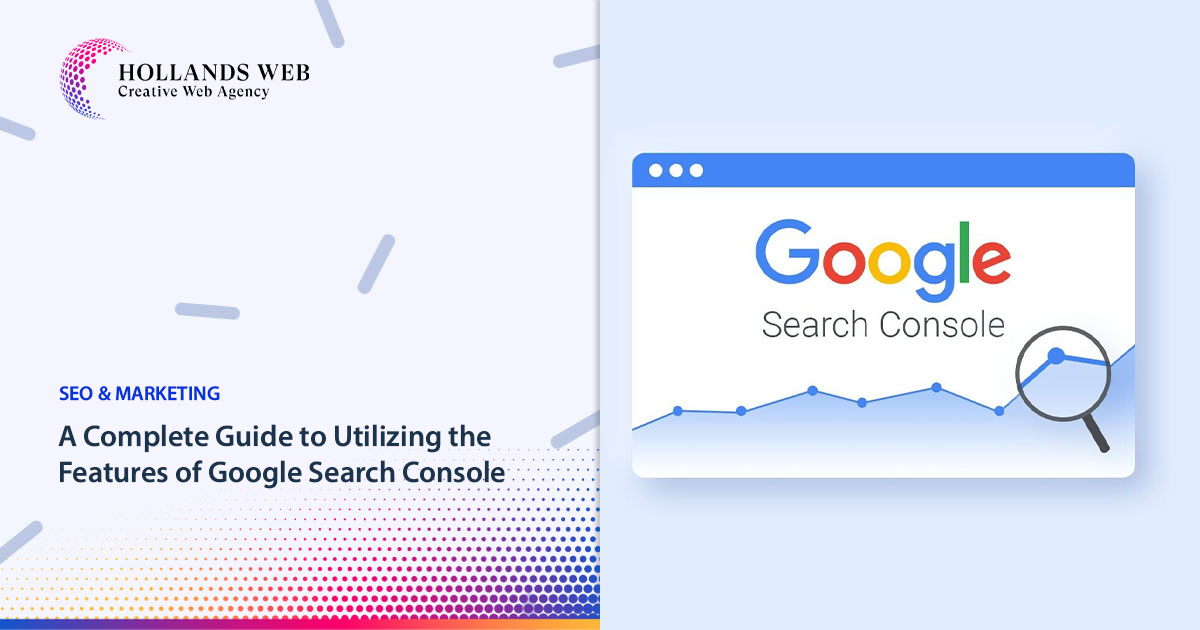No products in the cart.
Google Search Console is a free tool that helps website owners and marketers monitor their website’s performance on Google Search. It provides valuable insights into how Google crawls and indexes your website, identifies issues that might affect your website’s ranking, and offers suggestions to improve your website’s visibility on Google. In this guide, we will take you through the key features of Google Search Console and how to utilize them effectively.
Verification
The first step to using Google Search Console is to verify your website. This process is crucial because it confirms to Google that you are the owner or an authorized representative of the website. Verifying your website is a simple process that involves adding a small piece of code to your website’s header, uploading an HTML file, or adding a DNS record. Once you have verified your website, you can access all the features of Google Search Console.
Search Appearance
The search appearance section provides insights into how your website appears in Google search results. You can see how your website’s pages appear in search results, including the page title and meta description. You can also see how your website’s structured data is displayed in search results. By analyzing this information, you can optimize your page titles, meta descriptions, and structured data to improve your website’s click-through rate (CTR).
Search Traffic
The search traffic section provides insights into how your website performs in Google search results. You can see the number of clicks, impressions, click-through rate (CTR), and average position for each page on your website. You can also see the queries that people use to find your website. By analyzing this information, you can identify the keywords that drive traffic to your website and optimize your content accordingly.
Index Coverage
The index coverage section provides insights into how Google crawls and indexes your website’s pages. You can see the number of pages that are indexed, the pages that are not indexed, and the reasons why some pages are not indexed. By identifying the pages that are not indexed, you can fix any issues that might prevent Google from indexing those pages, such as broken links or duplicate content. Read more about “Discovered – currently not indexed” and how to solved it.
Sitemaps
The sitemaps section allows you to submit a sitemap of your website to Google. A sitemap is a file that contains a list of all the pages on your website. By submitting a sitemap, you can ensure that Google crawls and indexes all the pages on your website. You can also see the status of your submitted sitemap and any errors that might prevent Google from crawling or indexing your pages.
Mobile Usability
The mobile usability section provides insights into how your website performs on mobile devices. You can see the issues that might affect the usability of your website on mobile devices, such as small font size, unresponsive pages, or unplayable content. By fixing these issues, you can improve your website’s mobile user experience and potentially increase your website’s ranking on Google’s mobile search results.
Security Issues
The security issues section provides insights into any security issues that might affect your website’s performance on Google search. Google scans your website for any malware or hacking attempts. And if any issues are found, they will be reported in this section. By fixing these security issues, you can ensure that your website is safe and secure for your visitors.
Performance
The performance section provides insights into how fast your website loads and how it performs on different devices. You can see the average loading time, speed index, and other performance metrics for your website. You can also see the opportunities to improve your website’s performance, such as reducing the size of your images, optimizing your code, or using a content delivery network (CDN).
In conclusion, Google Search Console is a valuable tool for website owners and marketers to monitor their website’s performance






 Web Hosting
Web Hosting Web Designs
Web Designs Graphic Design
Graphic Design SEO
SEO Digital Marketing
Digital Marketing